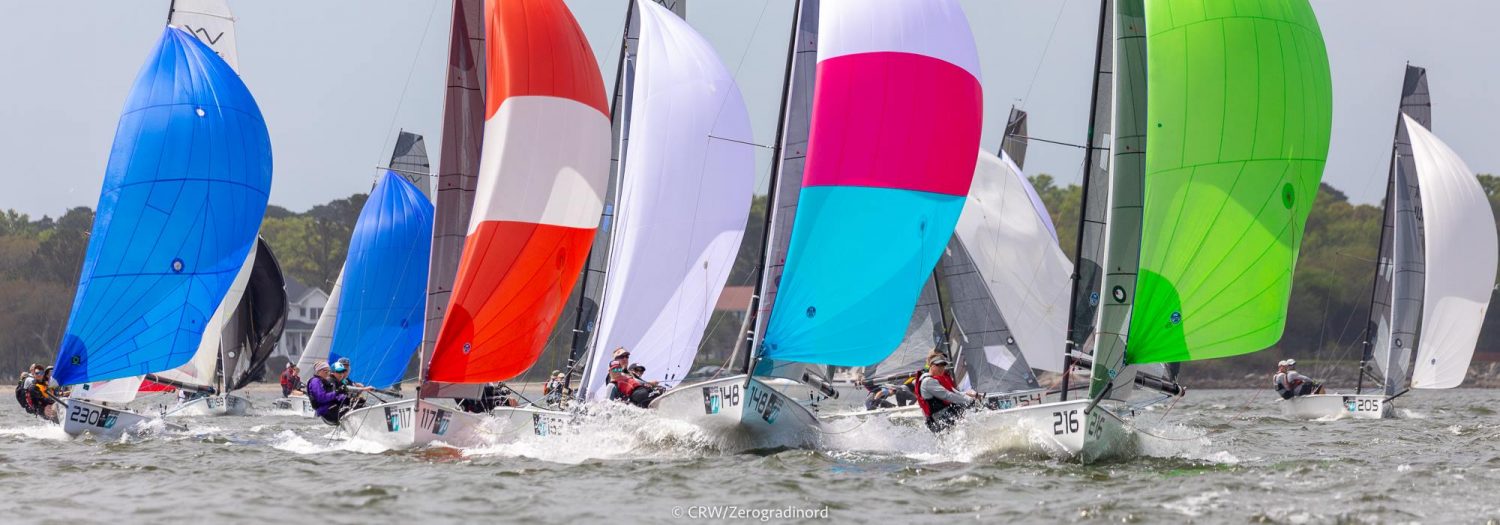Twenty-eight boats gathered at Gulfport Yacht club to sail the VX One North Americans. My brother and I were lucky enough to take the win and wanted to share our tuning thoughts/notes with the Class that we have put together the past several months.
Weight Placement/Heel
Since the boat is a planing hull form that includes flat hull sections and a wide stern, weight placement is crucial to the performance both upwind and downwind.
Upwind
0-8knts: forward crew sits max forward in cockpit or on deck next to the mast; skipper should sit forward so that body is in line with the keel. The boat should be sailed slightly heeled w/the windward chine just coming out of the water.
10-18knts: both crews hiking hard w/skipper hiking over vang cleat and forward crew sit/hiking up against the skipper. Boat should be sailed as flat as possible w/balance coming from mainsheet tension.
Downwind
0-6knts: crew weight should be max forward at all times w/forward crew sitting on leeward deck next to the mast; skipper should sit max forward w/his/her weight centered in the middle of boat. The boat should be sailed at a constant heel angle with the windward chine just out of the water.
8-10knts: “Displacement Mode” The goal in this condition is to maximize waterline at all times. Both skipper and crew should sit forward enough so the bow is roughly 3-4 inches in the water. In this mode, we try and sail the boat fairly flat or with a slight leeward heel.
11-15knts: “Lazy/Full Plane” Once the boat is planing and the bow is up, the skipper and crew should try and sneak the weight forward in the boat to maximize displacement and lower the drag of the stern.
16-22knts: In this condition, both the skipper and crew should be back in the boat with both crews hiking to windward.
Tuning
See my tuning guide that provides a quick snapshot of my rig, vang, outhaul and jib traveler settings. Hopefully this will provide a benchmark to compare to your current setup.
Cap/V1 Shrouds: With tension, these shrouds provide twist to the top of the main and in general provide a flatter sail. The V1’s also provide headstay tension and are crucial when easing the main to depower in winder conditions.
Lower/D1 shrouds: The lowers on a VX One control the lower mast bend in the mast. We general use a ratio of 1 lower turn to ever 2 turns of cap shroud tension. The lowers also have a dramatic impact on headstay tension, so as you can see from the guide as the windspeed increases the amount of turns on the lowers becomes much closer to the number of cap shroud turns.
In conclusion, I appreciate the opportunity to be able to sail in the Class and hopefully these notes will help provide an understanding of the boat/rig dynamics as well as provide a baseline for future progress.
